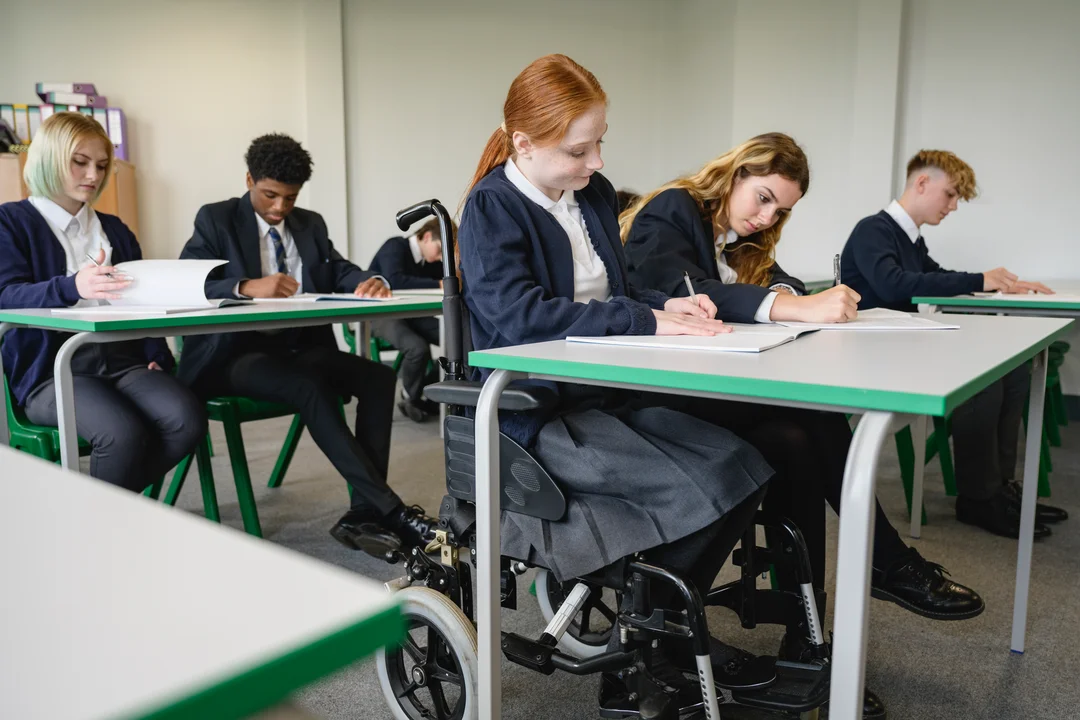How To Create an Inclusive Classroom
Creating an inclusive classroom isn’t just a box to tick — it’s about making every child feel seen, valued and supported, regardless of their background, ability or needs. As educators, fostering inclusion is key to developing a positive learning environment where all students can thrive.

Here’s how schools and teachers can build truly inclusive classrooms.
Start with Inclusive Planning
Inclusion begins at the planning stage. When designing lessons or activities, consider the diverse needs of your students:
- Different learning styles – Use a mix of visual, auditory and kinaesthetic techniques.
- Accessibility – Ensure materials are available in different formats (e.g. large print, dyslexia-friendly fonts, or screen reader compatible).
- Differentiation – Tailor tasks to challenge each student at the right level. This might mean setting flexible goals or offering different ways to demonstrate understanding.
Use Language That Welcomes Everyone
The language we use can empower — or alienate. Use inclusive language that respects all identities and avoids stereotypes. For example:
- Use gender-neutral terms where appropriate (e.g. “students” instead of “boys and girls”).
- Avoid assumptions about family structures, cultures or backgrounds.
- Model respectful behaviour and challenge discriminatory language when it arises.

Celebrate Diversity
Representation matters. Reflect the diversity of your students in your classroom displays, reading materials, historical examples, and cultural references.
- Highlight festivals, languages and traditions from different cultures.
- Include stories and achievements of people with disabilities, LGBTQ+ individuals, and those from varied ethnic and socio-economic backgrounds.
- Invite students to share their own experiences and traditions — with consent and support.
Build Strong Relationships
A sense of belonging is essential for inclusion. Take time to get to know your students — not just their academic levels, but their interests, personalities and home lives.
- Greet students individually.
- Encourage open communication and listen actively.
- Create a class charter together that sets expectations for kindness, respect and collaboration.
Support Wellbeing and Mental Health
An inclusive classroom also means recognising and supporting emotional needs.
- Incorporate mindfulness, movement breaks and emotional check-ins.
- Provide safe spaces where students can take a break if overwhelmed.
- Liaise with SENCOs and pastoral teams to support students with additional needs.
Work in Partnership with Families
Parents and carers play a crucial role in inclusion. Keep communication open, honest and two-way.
- Offer flexible ways for families to engage with school life (e.g. virtual meetings, translated communications).
- Be culturally responsive and avoid making assumptions.
- Value their insights about what works best for their child.
Keep Learning and Reflecting
Inclusion isn’t a one-time goal – it’s an ongoing process. Be open to feedback, professional development, and evolving your practice.
- Attend training on inclusive teaching and unconscious bias.
- Reflect on your classroom through an inclusive lens: Who participates most? Who might feel left out?
- Ask your students what helps them feel included — they’ll often give the best insights.
Inclusive classrooms don’t just benefit those with additional needs — they make learning better for everyone. By valuing each child’s uniqueness and creating a supportive space for all, we build not only academic growth, but also empathy, respect and community.
‹ Previous articleNext article ›